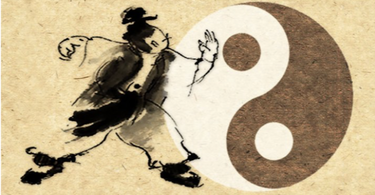 Image Credit Misha Ruth Cohen OMD, L.Ac. Image Credit Misha Ruth Cohen OMD, L.Ac. I had the great privilege of being introduced to Chi Kung by my dear friend Mary Beth Corbin CMT, along with practicing and teaching Chi Kung she also is a Chi Nei Tsang and Cranio-Sacral practitioner. The philosophy of Chi Kung is communicated very well through the book, Five Elements/Six Conditions, by Gilles Marin's a must read for those interested in understanding the philosophy that supports Chinese Medicine. Defined as a combination of two words, Chi meaning “vital life force energy” or “breath of life” and Kung which pertains to a skill or an exercise. The two words combined to describe systems and methods of “energy cultivation” and the movement of intrinsic energy within the body. Stagnation, congestion or overly active chi in the body is the root of physical and emotional imbalances. The practice of Chi Kung greatly assists the balancing of the body's life force or chi, enhancing feelings of wellbeing and improving health. The practice of Chi Kung is for people of all ages and experiences who are interested in reducing stress, increasing flexibility, improving muscle strength and agility. Movements are gentle and easy to learn requiring no special equipment other than possibly a yoga mat. Focused breathing, an integral part of Chi Kung practice, has been scientifically verified to enhance all aspects of well being. Regular practice of Chi Kung will...
Chi Kung encompasses a large variety of both physical and mental practices designed to help balance the body and the mind. Consisting of one or more of the following types of practice: dynamic, active, static, and healing meditations. According to the Traditional Chinese Medicine community, the origin of Chi Kung is commonly attributed to the legendary Yellow Emperor and the classic Book of Internal Medicine. Archeological evidence suggests the first forms of Chi Kung can be linked to shamanic meditative practice and gymnastic exercises. The Mawangdui Silk Texts (168 BC) shows a series of Tao Yin exercises that bear physical resemblance to some of the Chi Kung exercises being practiced today. Eventually evolving into formalized Taoist beliefs these practices have been incorporated into the field of Traditional Chinese Medicine. In the Taoist tradition, the writings of Lao Tzu and Zhuangzi both describe meditative cultivation and physical exercises to extend one's lifespan and improve one’s sense of wellbeing. The common thread throughout history is the increasing popularity of this system of mindful practice, which has spread throughout China and now across the world. Reprinted from Unwinding the Core Enjoy learning these three simple exercises, by Chi Kung teacher, Jutta Kellenberger-Reichert AM Warm-Up Kidney Breathing Before Bed Stretching to Improve Sleep Research has proven Chi Kung, Tai Chi and Yoga are life extending and have many health benefits. View the PDF file below for detailed research information on the health benefits of these practice.
0 Comments
Leave a Reply. |
VanessaCertified Wellness Consultant speaks up! Categories
All
Archives
June 2024
|
||||||
BRIDGE TO HEALTH
|
Bridge to Health Wellness
Awaken & Evolve Learning Center 7610 East McDonald Drive, Suites E & K Scottsdale, AZ 85250 805-235-8071 |
LinkTree - Find all our links here!
Booking Site - Social - YouTube Schedule Your Learn & Heal Consult Become a client Email: Bridge to Health Wellness |
 RSS Feed
RSS Feed